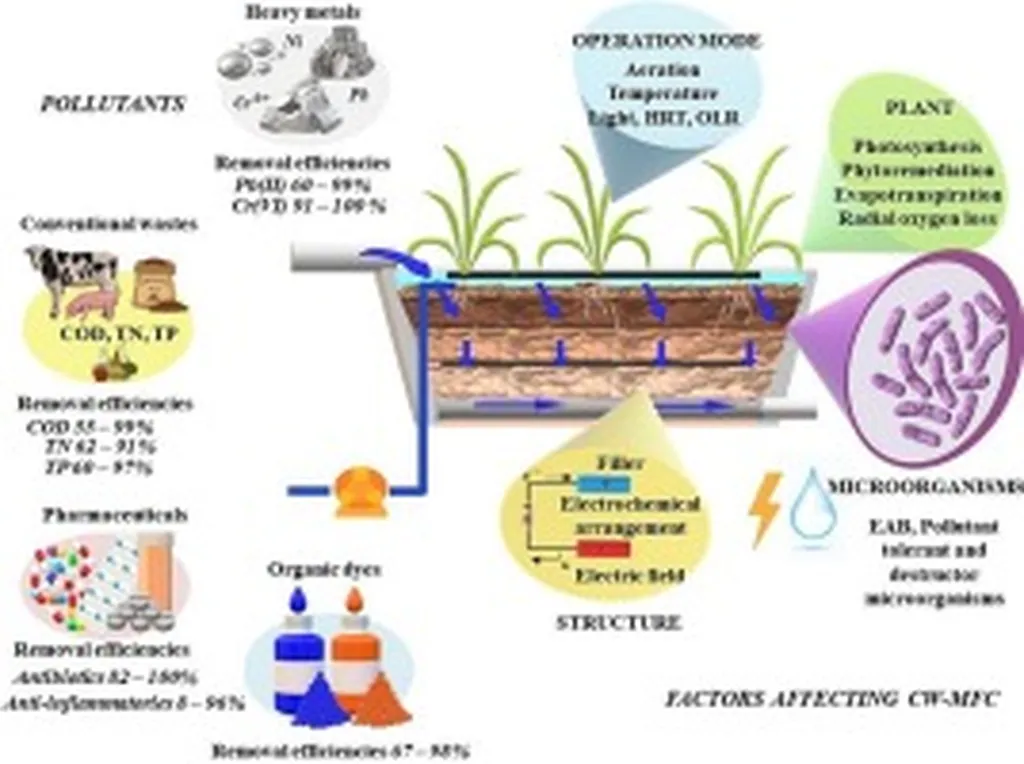In a promising development for wastewater treatment and renewable energy generation, researchers have combined constructed wetlands with microbial fuel cells (CW-MFCs) to create a system that not only cleans wastewater but also produces green electricity. This innovative approach, detailed in a study published in ‘Desalination and Water Treatment’ (which translates to ‘Water Treatment and Desalination’), offers a sustainable solution that could have significant implications for the maritime industry.
The research, led by Shabana Kosar from the Department of Chemistry at Government College Women University in Faisalabad, Pakistan, explored the effects of various factors such as organic loadings, operation times, plant species, circuit operation modes, and microbial loads on the performance of CW-MFCs. The system consists of two chambers: an anaerobic (anode) chamber and an aerobic (cathode) chamber. Cymbopogon nardus, a type of lemongrass, was chosen as the plant species for the wetland.
The study found that CW-MFCs can effectively remove organic pollutants, chemical oxygen demand (COD), and biochemical oxygen demand (BOD) from wastewater while generating electricity. The power density achieved was 11.79 Wm−2, with a maximum current density of 0.39 Am−2. The researchers noted that electricity generation was higher at longer hydraulic retention times (HRT), likely due to increased substrate–microbe contact time enhancing electron recovery efficiency.
“CW-MFC1 (gravel configuration) has a greater removal efficiency due to the best absorption capacity of the substrate,” Kosar explained. “This system showed the degradation (94 %), COD (93 %) and BOD (90 %) removal efficiency irrespective of increasing the pollutant concentration.”
For the maritime industry, this technology presents several opportunities. Ships and offshore platforms generate significant amounts of wastewater, and treating this wastewater efficiently is a constant challenge. CW-MFCs could provide a sustainable solution by not only treating the wastewater but also generating renewable energy that can be used on board. This dual functionality could reduce the environmental impact of maritime operations and contribute to the industry’s sustainability goals.
Moreover, the technology could be particularly beneficial for remote or offshore locations where access to traditional wastewater treatment facilities is limited. The ability to treat wastewater on-site and generate renewable energy could enhance operational efficiency and reduce costs.
The study also highlights the potential for further research and development in this area. As the maritime industry continues to seek sustainable solutions, technologies like CW-MFCs could play a crucial role in reducing environmental impact and improving operational efficiency.
In summary, the integration of constructed wetlands with microbial fuel cells offers a promising approach to wastewater treatment and renewable energy generation. For the maritime industry, this technology presents opportunities to enhance sustainability and operational efficiency, making it a valuable area for further exploration and investment.

